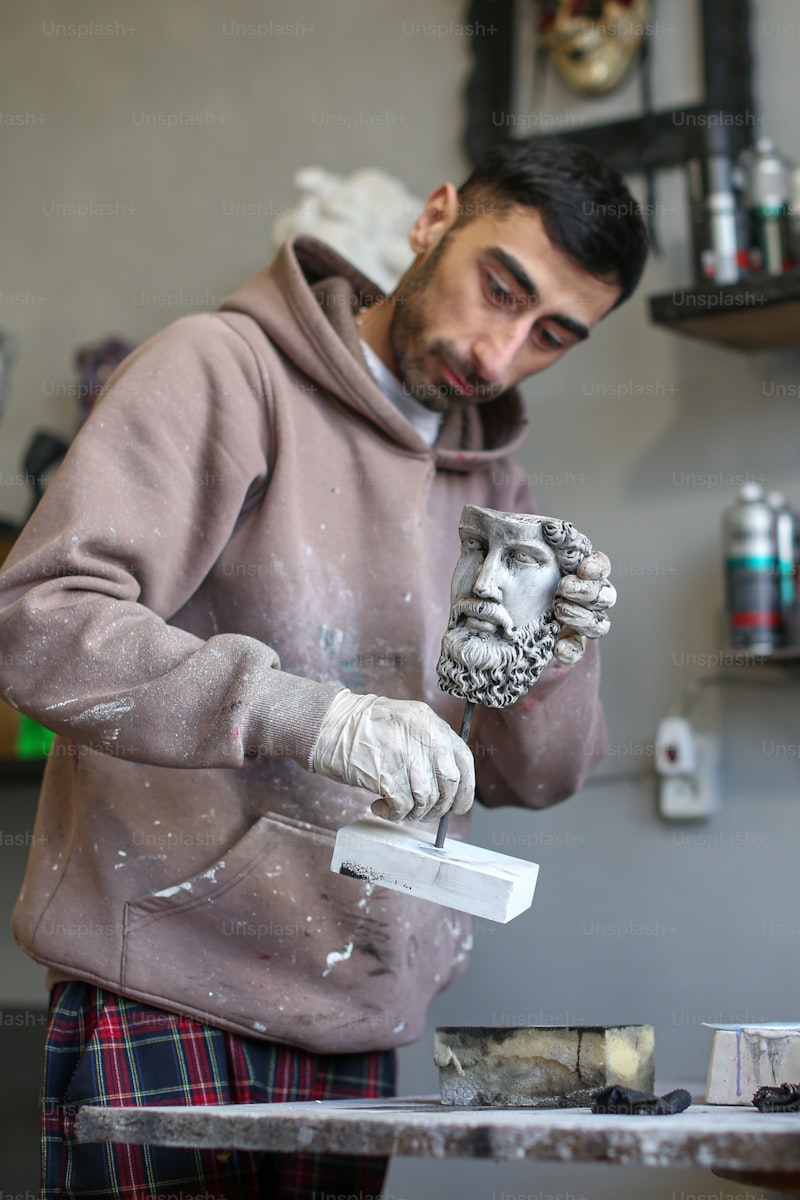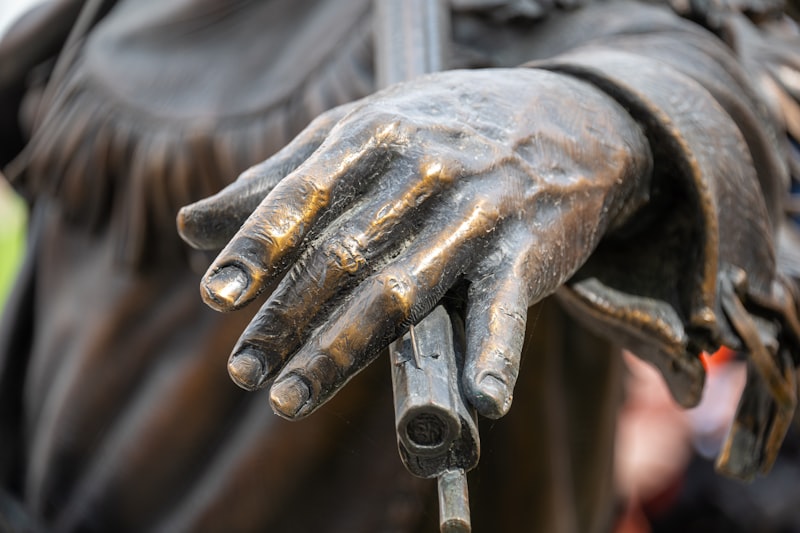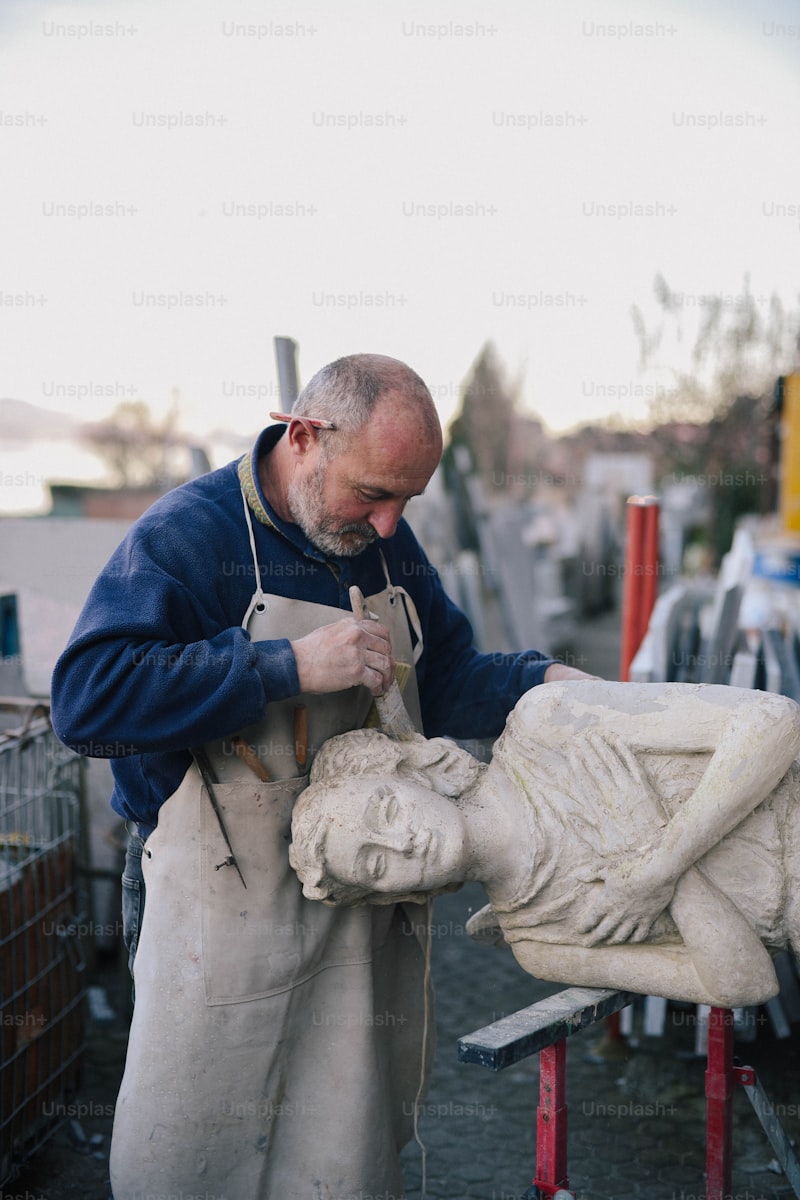Have you ever marveled at the sheer creativity and skill behind iconic sculptures? From the majestic beauty of Michelangelo’s David to the abstract genius of Picasso’s works, sculptures have a unique way of capturing the essence of human emotion and history in solid form.
Michelangelo Buonarroti, a name synonymous with Renaissance art, crafted the awe-inspiring statue of David, standing tall in Florence’s Galleria dell’Accademia. This masterpiece not only showcases Michelangelo’s mastery over marble but also embodies the ideal human form with intricate details that leave viewers in awe centuries later.
Moving forward in time, Auguste Rodin revolutionized sculpture with his emotive piece, “The Thinker.” This brooding figure, originally part of his larger work “The Gates of Hell,” evokes contemplation and introspection, making it a timeless symbol of intellectual pursuit and human struggle.
Switching gears to the 20th century, Constantin Brancusi, a Romanian sculptor, brought a modernist touch to the art form. His work “Bird in Space” challenges traditional perceptions of sculpture by emphasizing fluidity and movement in polished bronze, exemplifying the essence of flight and freedom.
Not to be overlooked, Pablo Picasso, primarily known for his paintings, also left an indelible mark on sculpture. His creation “Bust of a Woman” demonstrates Picasso’s cubist approach, where traditional forms are fractured and reassembled to depict multiple perspectives simultaneously.
These sculptors, through their diverse styles and mediums, have shaped the art world and continue to inspire generations. Their works speak volumes about human creativity, emotion, and the enduring power of artistic expression.
Masterpieces in Stone: Unveiling the Iconic Sculptures of Michelangelo
In the world of art and sculpture, few names evoke as much awe and reverence as Michelangelo Buonarroti. His works, carved from marble with unparalleled skill and passion, stand as timeless masterpieces that continue to captivate and inspire generations.
Michelangelo’s sculptures are not merely stone and chisel creations; they embody profound emotions and human spirit, frozen in time. Take, for instance, his renowned statue of David. This towering figure, standing over 17 feet tall, is a testament to Michelangelo’s ability to breathe life into stone. The intricacy of David’s expression, poised in anticipation and determination, reflects the artist’s meticulous attention to detail and his deep understanding of human anatomy.
Another masterpiece by Michelangelo is the Pietà, housed in St. Peter’s Basilica in Vatican City. This sculpture depicts the Virgin Mary cradling the lifeless body of Jesus Christ after the Crucifixion. The delicate folds of Mary’s robes and the serene expression on her face convey a profound sense of sorrow and maternal love, showcasing Michelangelo’s mastery in capturing raw human emotions in marble.
Michelangelo’s skill was not limited to religious themes; he also excelled in portraying mythological figures. His sculpture of Bacchus, the Roman god of wine, is a celebration of classical aesthetics. The figure, depicted in a state of inebriation yet exuding grace, is a testament to Michelangelo’s ability to imbue his subjects with both physical beauty and psychological depth.
Each of Michelangelo’s sculptures tells a story, inviting viewers to contemplate the complexities of the human experience. From the muscular intensity of his unfinished slaves struggling to break free from their marble confines, to the serene beauty of the Moses statue, Michelangelo’s works continue to evoke wonder and admiration centuries after their creation.
In essence, Michelangelo’s sculptures transcend time and culture, speaking a universal language of beauty and emotion. They remind us of the boundless potential of human creativity and the enduring power of art to move and inspire. As we gaze upon these masterpieces in stone, we are reminded of Michelangelo’s immortal words: “Every block of stone has a statue inside it, and it is the task of the sculptor to discover it.”
Rodin’s Legacy: Exploring the Timeless Beauty of ‘The Thinker’ and More
Auguste Rodin, the renowned French sculptor, left an indelible mark on the art world with his masterpiece ‘The Thinker’. This iconic sculpture, originally part of his larger work ‘The Gates of Hell’, captivates viewers with its powerful depiction of introspection and contemplation. Positioned in a seated position, muscles tensed in deep thought, ‘The Thinker’ embodies the essence of human intellect and existential questioning.
Rodin crafted ‘The Thinker’ in 1880, drawing inspiration from Dante’s ‘Divine Comedy’. It represents Dante himself, pondering over the complexities of Hell’s circles, a metaphor for the human condition. Beyond its philosophical depth, the sculpture’s intricate details—the muscular structure, the furrowed brow, and the posture—invite viewers to engage with its narrative.

‘The Thinker’ is not just a sculpture; it’s a symbol of intellectual pursuit and the quest for understanding. Its universal appeal lies in its ability to resonate with anyone who has grappled with profound thoughts or faced moral dilemmas. Rodin’s genius lies not only in his technical skill but also in his ability to evoke emotion and provoke thought through his art.
Beyond ‘The Thinker’, Rodin’s legacy extends to numerous other sculptures that explore human emotion, movement, and form. His works like ‘The Kiss’ and ‘The Burghers of Calais’ continue to inspire awe and admiration, showcasing his mastery of capturing human expression in bronze and marble.

Rodin’s influence on modern sculpture cannot be overstated. His innovative approach to form and emotion paved the way for future artists to break away from classical conventions and explore new dimensions of artistic expression. Today, his sculptures are cherished treasures in museums and private collections worldwide, a testament to their enduring relevance and timeless beauty.
Rodin’s ‘The Thinker’ and his broader body of work remind us of the power of art to transcend time and language, offering profound insights into the human experience. As we continue to admire and study his sculptures, we are reminded of our own capacity for introspection and the eternal quest for meaning in our lives.
From Greece to Modernity: The Evolution of Sculpture Through History
In ancient Greece, sculpture reached its pinnacle during the Classical period (5th to 4th centuries BCE). Artists such as Phidias and Praxiteles perfected the portrayal of the idealized human body, embodying beauty, harmony, and grace in marble and bronze. The sculptures of this era, such as the iconic statue of Athena Parthenos and the graceful Aphrodite of Knidos, set the standard for centuries to come.
As civilizations rose and fell, the techniques and styles of sculpture evolved. During the Renaissance in Europe, artists rediscovered the classical ideals of Greece and Rome, leading to a revival in sculpture. Masters like Michelangelo breathed life into marble, creating dynamic figures such as David, whose strength and determination are palpable even today.
Moving into the modern era, sculpture has expanded beyond traditional materials and forms. Artists like Auguste Rodin challenged conventions with expressive and emotive pieces such as “The Thinker,” which questioned the traditional norms of beauty and posed existential questions.
In the 20th and 21st centuries, sculpture has become increasingly experimental and diverse. From abstract forms that provoke thought and emotion to large-scale installations that interact with their environment, contemporary sculptors continue to push boundaries and redefine what sculpture can be.
The evolution of sculpture mirrors the evolution of humanity itself, from the idealized gods of ancient Greece to the introspective works of today. Each era leaves its mark on the art form, reflecting the values, beliefs, and aspirations of the society that created it. Sculpture continues to captivate and inspire, reminding us of our shared history and the boundless creativity of the human spirit.
The Genius of Bernini: Baroque Elegance and Dramatic Sculptural Artistry

Imagine strolling through the grandeur of Rome, encountering Bernini’s masterpieces that seem to transcend mere stone and marble. His sculptures are not static figures but living, breathing embodiments of emotion and narrative. Take, for instance, his famous work “Apollo and Daphne.” In this masterpiece, Bernini captures the very moment Apollo chases Daphne, who, upon reaching the climax of her flight, transforms into a laurel tree. The tension in Daphne’s outstretched fingers and Apollo’s desperation is palpable, frozen in time by Bernini’s skillful hands.

What sets Bernini apart is his ability to imbue his sculptures with a sense of movement and emotion. His figures twist and turn, their muscles tense, faces contorted in agony or ecstasy. Each piece tells a story—a story of love, of tragedy, of triumph—drawing the viewer into a narrative that transcends the physical confines of the sculpture itself.

Beyond his sculptures, Bernini’s influence extended to architecture and urban planning. He reshaped the very fabric of Rome, leaving an architectural legacy that still defines the cityscape today. His designs, such as the magnificent colonnade of St. Peter’s Square, exemplify his vision of integrating sculpture and architecture into a harmonious whole.
In essence, Bernini’s genius lies not only in his technical prowess but also in his ability to evoke profound emotional responses from those who view his works. His sculptures are not merely decorative pieces but powerful expressions of human experience and spirituality. They challenge us to contemplate the complexities of life and the depths of human emotion, leaving an enduring impact that resonates through the centuries.
Bernini’s legacy continues to inspire artists and art lovers alike, reminding us of the transformative power of art to move the soul and provoke thought. As you explore his works, you can’t help but marvel at the sheer brilliance and innovation of a man whose artistic vision transcended his time, leaving an indelible mark on the world of sculpture and beyond.
Frequently Asked Questions
What are the most iconic sculptures created by Michelangelo?
Discover Michelangelo’s most iconic sculptures, including the renowned David, symbolizing Renaissance humanism and skillful marble mastery.
How did Bernini influence Baroque sculpture?
Learn how Bernini transformed Baroque sculpture through dynamic compositions, emotional intensity, and technical innovations in marble and bronze.
What are the notable works of Auguste Rodin?
Discover the notable works of Auguste Rodin, a pioneering sculptor known for masterpieces such as ‘The Thinker,’ ‘The Kiss,’ and ‘The Gates of Hell.’ His art captivates with its emotive power and revolutionary approach to form and expression in sculpture.
Who are some famous sculptors throughout history?
Discover influential sculptors who shaped art history. Learn about renowned figures like Michelangelo, Auguste Rodin, and Donatello.
How did Rodin revolutionize sculpture in the 19th century?
Discover how Rodin reshaped sculpture in the 19th century through his innovative approach to form and emotion, breaking away from traditional norms to capture raw human experience with unprecedented realism and depth.


